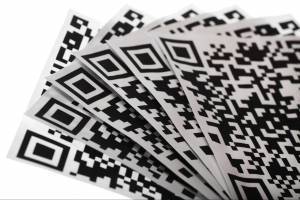
Printed and electronic tracking come together in the final stage of the FDA’s Drug Supply Chain Security Act (DSCSA). Unless the agency extends the November 2023 deadline, the pharmaceutical supply chain must have lot-level Electronic Product Code Information Services (EPCIS) implemented. The industrial inkjet printing industry stands to benefit from these regulations.
10 Years in the Making
The early stages of the DSCSA required human-readable information about the supply chain. Serialized tracking information established inkjet printing as the versatile solution for variable tracking information.
The U.S. Congress enacted the Drug Supply Security Act in November 2013. In January 2015, they required manufacturers to begin printing lot numbers of packaging for all prescription drugs. Since then, the FDA has required other tracking information.
Required DSCSA Information
- Proprietary or established name or names of the product
- Strength and dosage form of the product
- National Drug Code (NDC) number of the product
- Container size
- Number of containers
- Lot number of product
- Date of the transaction
- Date of the shipment if more than 24 hours after the date of the transaction
- Business name and address of the person from whom ownership is being transferred
- Business name and address of the person to whom ownership is being transferred
The vision for the regulations looked towards a future where both human-readable and machine-readable tracking information is required. As expected in this digital age, 2017 saw the introduction of mandates for lot-level tracking information to be transferred to supply-chain partners electronically using an advance ship notice (ASN).
What’s Changing for the Pharma Supply Chain in 2023
The DSCSA doesn’t stop at the lot level. Requirements get even more granular.
To fully protect consumers from counterfeit medications, pharma products must transfer unit-level information electronically at the handoffs in the supply chain. At this point, fully serialized traceability becomes complete for the U.S. pharmaceutical supply chain.
Packaging units can use RFID chips or printed 2D codes to comply with interoperability. Each technology connects to a database with the required tracking information. Either way, a scanner or reader extracts the required identifiers and begins validation with the database.
Required Identifiers for Interoperability Compliance
- National Drug Code (embedded in the Global Trade Item Number®, GTIN®)
- Serial number
- Lot number
- Expiration date
How Industrial Inkjet Printing Supports DSCSA Compliance
Despite rumors of its demise, print remains very much alive.
Manufacturers place static product information onto a label and apply it to each product. Other information, such as expiration dates that change, requires inkjet printers to directly mark every bottle, container, or box with variable data.
Printing QR codes with industrial inkjet printers offers the fastest and most cost-effective solution for connecting a unit to its corresponding electronic data.
For the grand plan for the system to work, companies must print QR codes at consistently high quality.
Inks for 2-D Coding
Ink Options
Inkjet inks from companies like Kao Collins optimally match the ink to the printhead technology and the pharmaceutical packaging or label material. For example, an ink that fails to dry quickly may spread, causing scanning failure. Fast dry time also supports high-speed printing because of the quantity of drugs produced.
How the QR Code and Electronic Data Come Together
 Under the DSCSA, all pharmaceutical companies in the U.S. must affix or imprint a product identifier to each package and homogenous case of a product they intend to introduce in a transaction.
Under the DSCSA, all pharmaceutical companies in the U.S. must affix or imprint a product identifier to each package and homogenous case of a product they intend to introduce in a transaction.
Interoperable Exchange
Trading parties must exchange relevant and required trading transaction information and statements. This exchange should happen in a secure, electronic, and interoperable manner. The transaction information should include the product identifier at the package level.
Interoperable Verification
Trading parties should be able to securely, electronically, and interoperably verify the product identifier on a sealed homogeneous case or product package. The information may be printed with industrial inkjet systems directly on a container or on a label that is applied to the label.
Interoperable Tracing
Trading partners must maintain a secure, electronic, and interoperable system capable of providing transaction information and statements and prompt gathering of information needed to produce the transaction information for every transaction that goes back to the manufacturer.
Products Excluded from the DSCSA
- Blood or blood components intended for transfusion
- Certain radioactive drugs or radioactive biological products
- Imaging drugs
- Certain intravenous products
- Any medical gas
- Homeopathic drugs marketed in accordance with applicable guidance under the FD&C Act
- Drugs compounded in compliance with sections 503A or 503B of the FD&C Act (21 U.S.C. 353a or 353b).
All of the required technology is in place to support the DSCSA interoperable requirements, something that could not have been accomplished as easily before inkjet printing evolved into what it is today.






